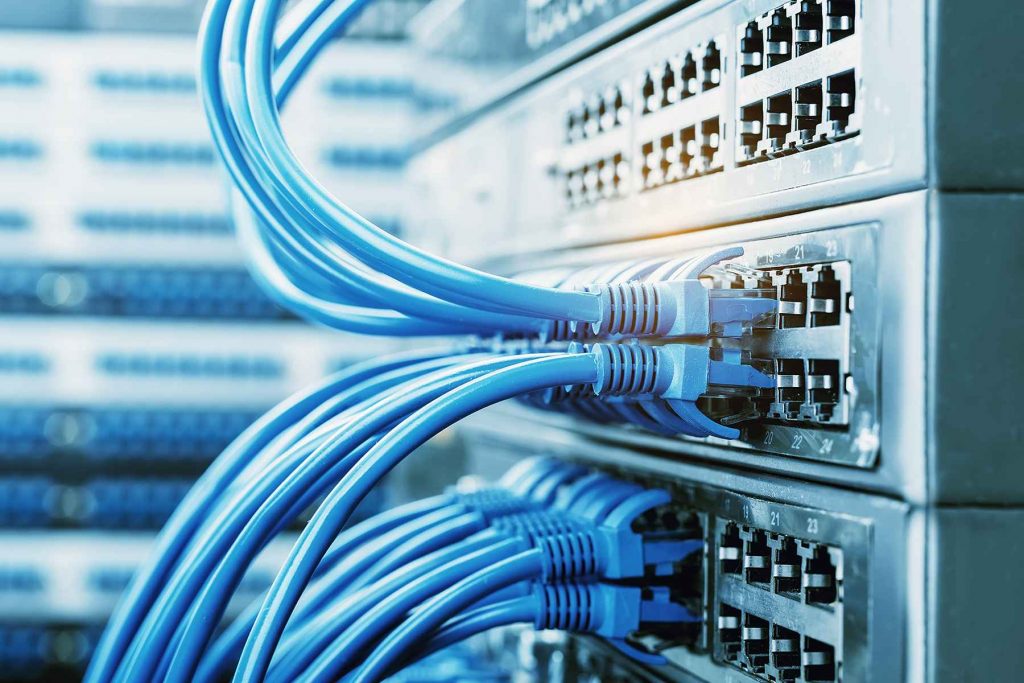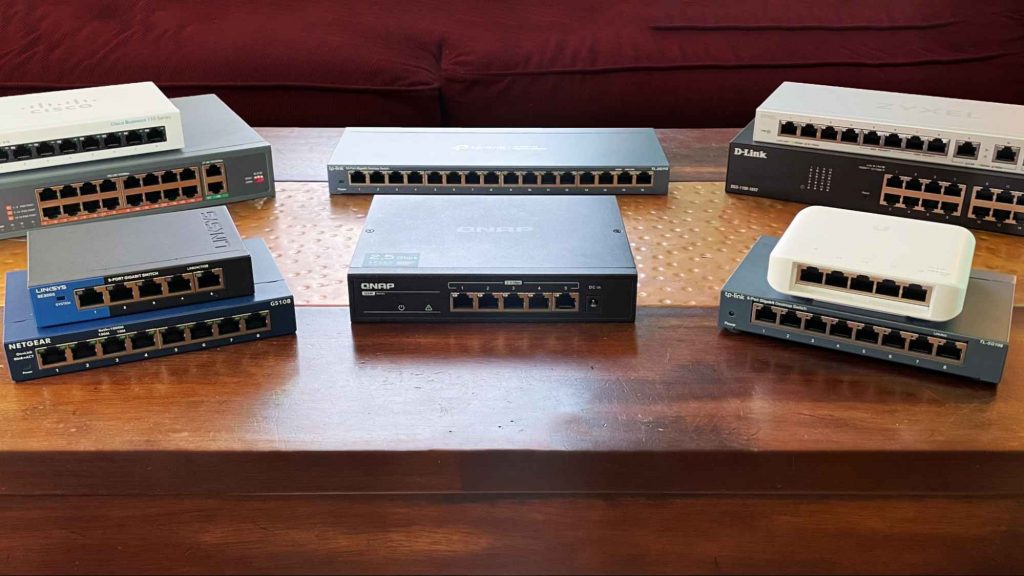Ethernet switches are a vital piece of networking hardware for enterprises of all sizes, as several Ethernet ports allow for faster connectivity and access across a wide range of devices. We will also discuss the many types of Ethernet switches and provide a quick explanation of each so that you can understand which provides which function. So let’s get started.

What Is the Purpose of an Ethernet Switch?
Before we see how does an Ethernet switch work, let’s look at what an Ethernet switch is for.
Address learning
Using the traffic forwarding guidelines outlined in the IEEE 802.1D bridging standard, an Ethernet switch regulates the delivery of frames across switch ports linked by Ethernet cables. Address learning is the foundation of traffic forwarding.
Switches decide how to forward traffic based on the 48-bit media access control (MAC) addresses used in LAN technologies, including Ethernet. To accomplish this, the switch examines the source addresses in each frame it receives in order to determine which devices, referred to as stations in the standard, are on which network segments.
Versatility & flexibility for wired networks
An Ethernet switch offers a ton of flexibility and adaptability for wired networks. It allows dozens of devices to join the network. Network administrators can manage user access on the network, monitor network traffic, and regulate connections between machines.
Ethernet switches function as an alternative to wireless networks, which link computers to the network using a wireless modem or adapter and do not require Ethernet cables and ports.
Transparent bridging
Ethernet switches are made to be unseen by the network’s devices, which explains why this method of connecting networks is also known as “transparent bridging“. Transparent bridges operate without the intervention of end stations, performing the essential routing and management duties.
Frame flooding
If a switch doesn’t receive any frames from a certain source for a prolonged period, it may remove entries in the forwarding database from the list. This is a process used by switches in which all ports other than the incoming port receive the Ethernet packet that the switch has received. Although the technique resembles another procedure known as an Ethernet Broadcast, it differs from a broadcast in terms of its genesis.
How Does an Ethernet Switch Work
Each device connected to an Ethernet switch is identified by its address and MAC (media access control) address. The location of data packets is then determined using this information. The network layer’s (Layer 3) IP address can be dynamically allocated to a device and can change over time, but the MAC address identifies the physical device and is static.
It performs a similar purpose to a hub but is more intelligent and performs better than a hub. Switches employ de-collision instead of hubs, which use collisions to decide when to deliver data. Switches can send data even if there are no open ports on the network segment because they can store and forward frames.
Additionally, most switches include full-duplex functionality, which allows packets arriving from and going to a device to access the entire bandwidth of the switch connection. It reduces the possibility of network traffic to and from a switch and a connected device colliding simultaneously.
Related: How Does a Switch Work

What Are the Different Types of Switches?
Modular switches
As network requirements evolve, modular switches give you the flexibility to install expansion modules as needed. You can use expansion modules for firewalls, wireless connectivity, or network analysis, and they are all application-specific. Additionally, they might support more cooling fans, power supplies, or interfaces. You have the most freedom with this kind of changeover, but it costs more.
Unmanaged switches
These gadgets don’t need any initial configuration. It is ready to use as soon as you remove it from the packaging and plug in the power wire. Even the least technically savvy individuals can install them because they are true plug-and-play devices.
Unmanaged switches are incredibly dependable and give each port on the switch the same experience. An unmanaged switch can easily increase the number of wired devices in your network.
Unmanaged switches are favored in home networks due to all of these advantages. You should probably choose an unmanaged switch if you’re considering purchasing a switch for your network.
Managed switches
A managed switch provides at least 100 to 1000 configuration choices, which are particularly helpful for corporate LANs and range in size from medium to large. This type of Ethernet switch has complete control over the network and can configure each Ethernet port.
Additionally, using gigabit or 10-gigabit cables helps the network achieve its optimum efficiency level. With these kinds of switches, the network administrator can set up specific permission and authentication security policies when new devices are added to the network.
Smart switch
The smart switch, sometimes known as an intelligent switch, is a common form of switch in networking. These devices are a sort of managed switch with a limited amount of management options.
A smart switch might merely offer functionality to adjust a small number of parameters, such as VLANs or duplex modes, instead of offering a managed switch’s full management functionality.
A smart switch can be an excellent alternative if your network does not need a comprehensive set of adjustments. While still providing more customization choices in comparison to unmanaged switches, these devices are frequently cheaper than fully managed switches.
PoE switch
Wireless access points, IP cameras, and VoIP phones may all receive power and data over twisted-pair Ethernet cables thanks to a technology called Power over Ethernet (PoE). It enables a single RJ45 patch cable to deliver both a data connection and power to connected edge devices, eliminating the need for two separate cables.
Read more: How Does a Wireless Router Work
Conclusion
That concludes the article. This is all about an overview of how does an Ethernet switch work. We believe you now have a general understanding of the purpose of an Ethernet switch also. We did our best to present the information in simple terms.